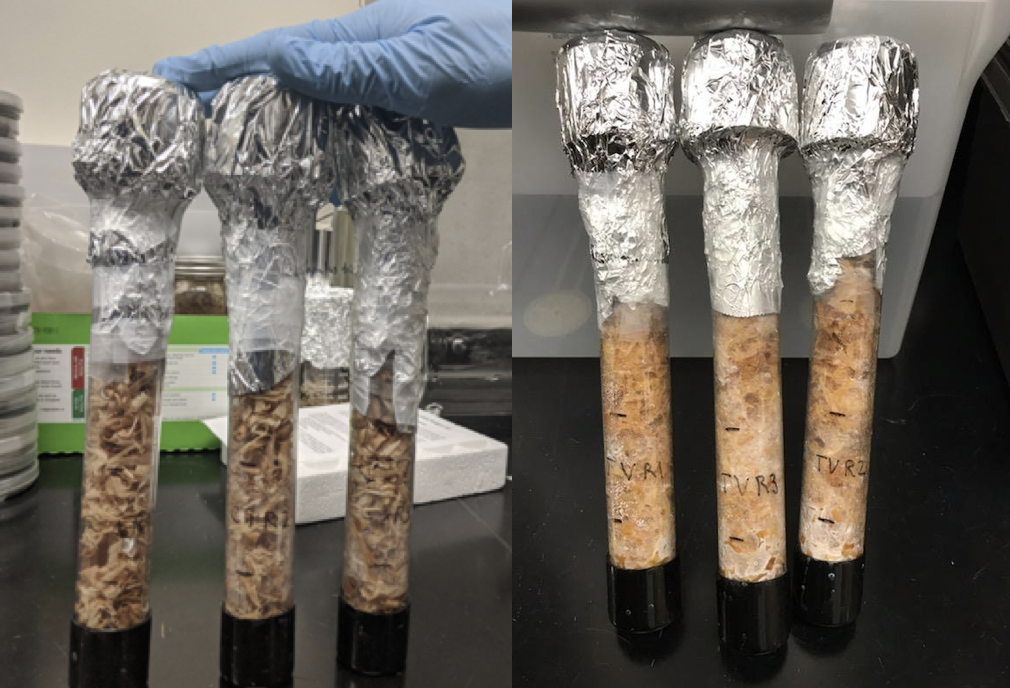Project Methods
Last edited 5/5/2020
▪ Each species of fungi was chosen based off serveral key characteristics, which were incorporated as criteria in the decesion matrix below. Selected fungi were cultured on cultured plates; the bulked up fungi were then inoculated onto the biofilters. The biofilters were tested with E. coli contaminated water, and E. coli concentration was enumerated with Standard Method 9222.
Decision Matrix Table

▪ All the decision matrix criteria were weighted equally except for two - Cost and Human/Environment Hazard. Because all of these fungi cost the same amount, it was not a large weight; however, the cultures did need to be commercially available for purchase. Inonotus arizonicus is an example of a fungus that was not commercially available to buy. The Human/Environmental hazard was weighted more because the whole point was remediation. If the fungi started killing off local trees, like Armillaria could, it would not do the treatment any good. A perfect fungi would get a 10 across the board, the closest one was Pleurotus. After Pleurotus, Trametes & Stropharia were the next best. Although not on this list, another fungi chosen was Trichoderma; it was a fungi found at our local wastewater treatment plant and our mycologist suggested we try testing it. The final test group of species included Pleurotus Ostreatus, Stropharia rugosoannulata, Trametes versicolor, Hericium Erinaceous, and Trichoderma asperellum.

Inoculated biofilters taken Februaru 1, 2020 (left) and biofilters after a five week growth period taken March 5, 2020 (right), Photo credit: David Hammond.
▪ Fungi where inoculated onto steril biofilters under aseptic conditions. A parfait model was used to inoculate the biofilters. The layers included sterile aspen wood chips, 6 mL of 50% PDB broth, and two 1 cm fungi plugs. This was repeated to make 5 layers in each biofilter. Biofilters where then put away to grow for 4-5 weeks. The above pictures shows the biofilters when they were just incoulated and the biofilters after 5 weeks.
Testing the Biofilters

Annotated biofilter testing setup, photo taken March 10, 2020, Photo credit: Chase McLeod.
▪ Testing the biofilters were completed by using a constructed stand, burrets, ring stands, and a catch basin. To start, 600 mL of DI water was flushed through each biofilter to saturate the biofilters. Each Burret was then calibrated to 1 mL per second. One species was tested at a time and 600 mL of contaminated water was then poured into the burrets. The efluent was then tested for E. coli.